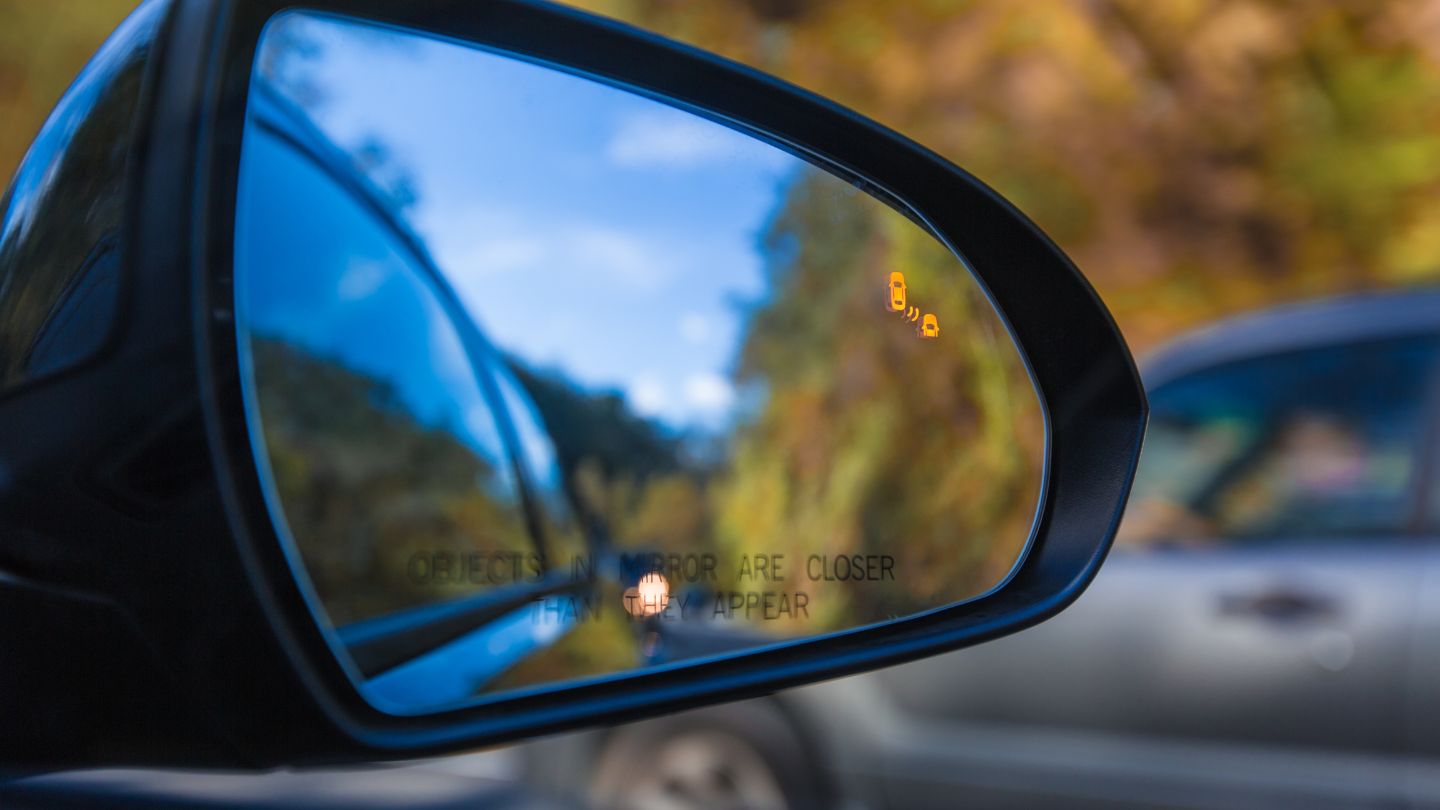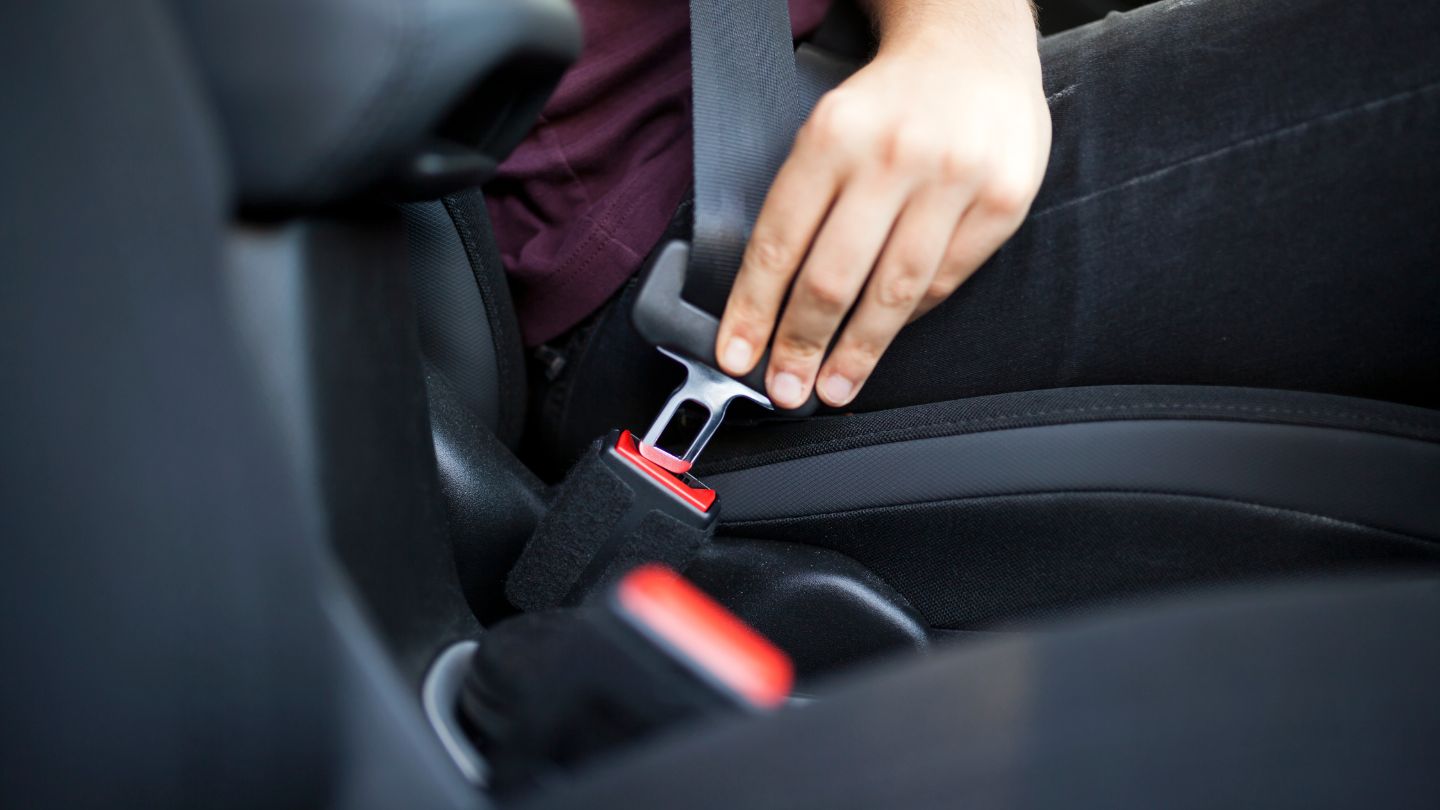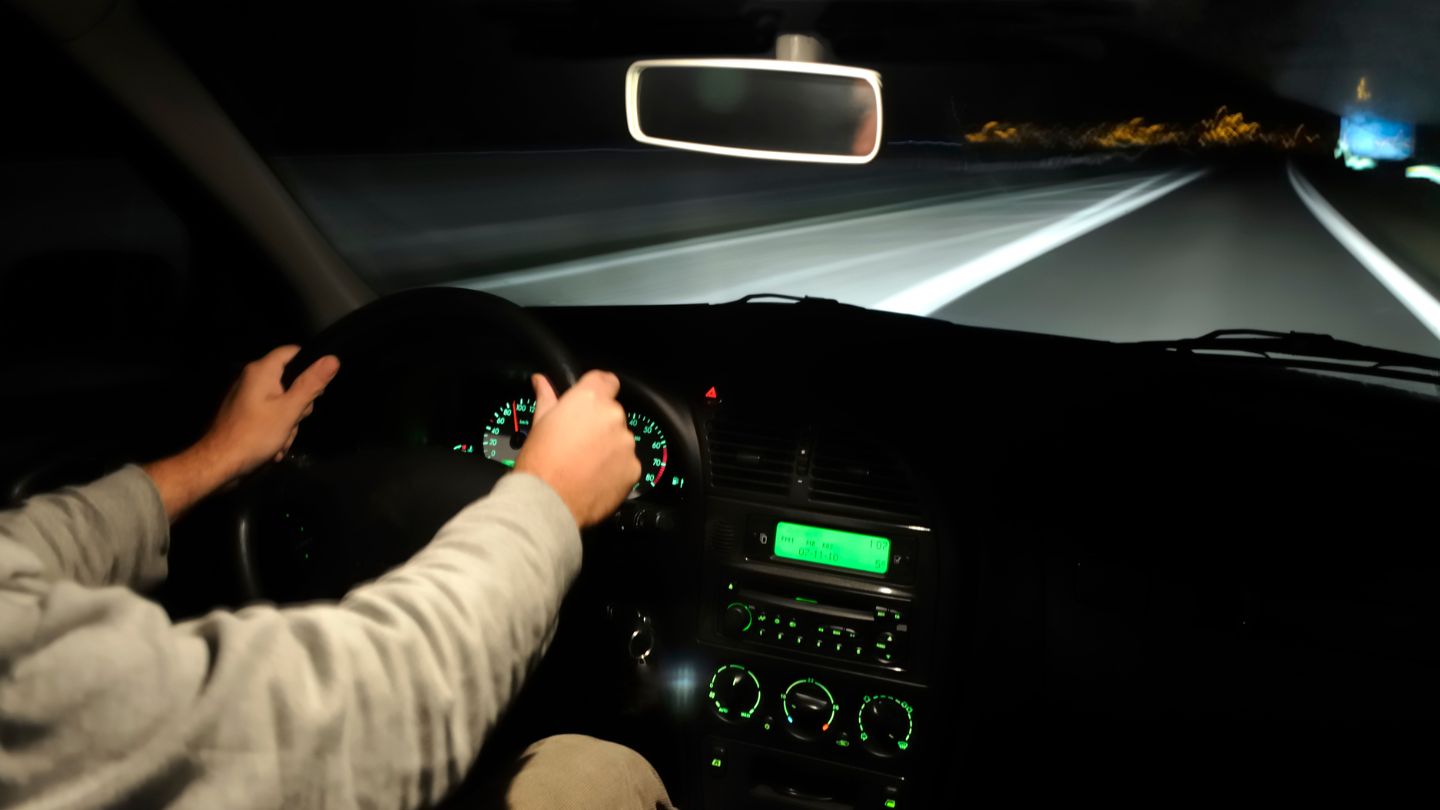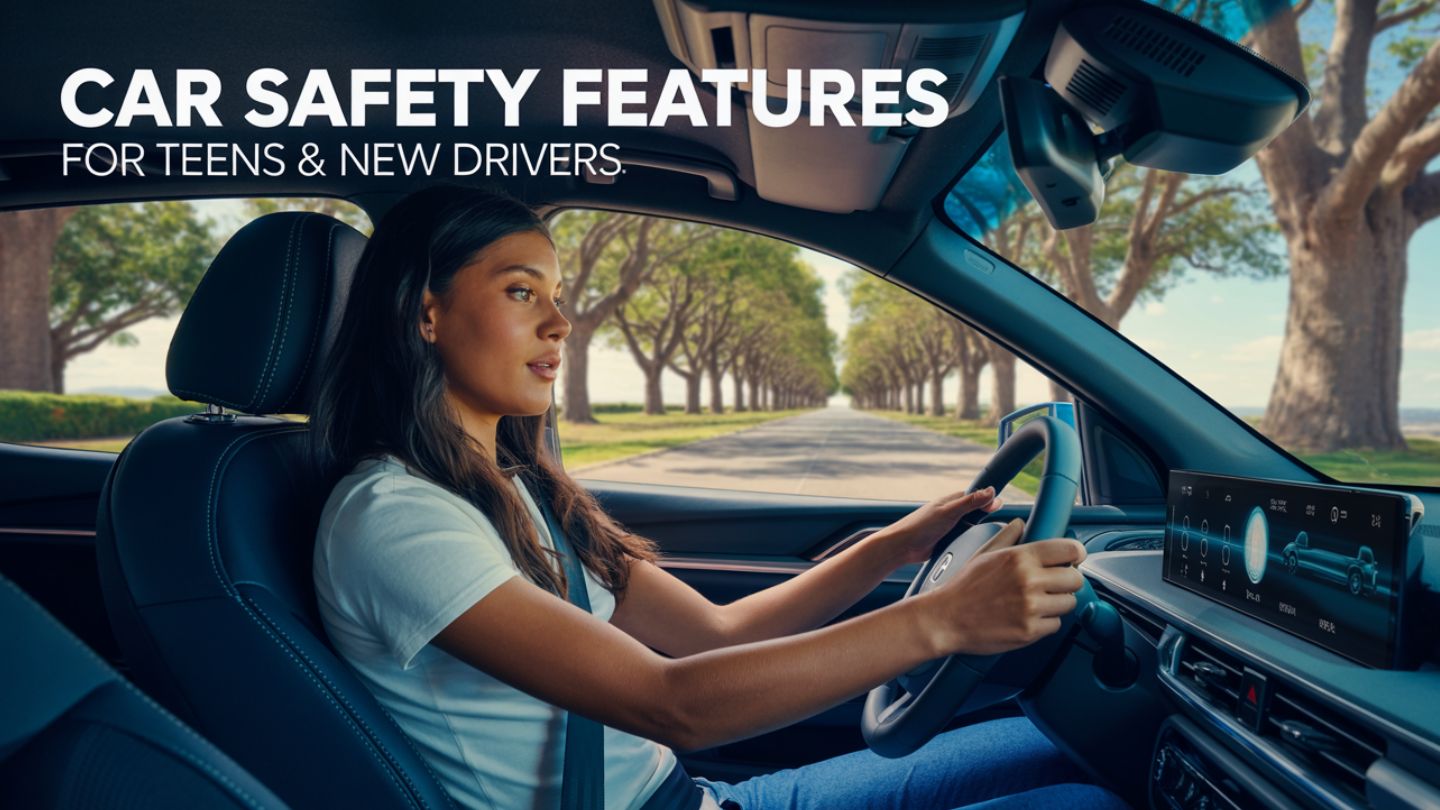Choosing the best car safety features for teens and new drivers is a key step in ensuring their safety behind the wheel. From foundational protections like airbags and ABS to modern technologies like automatic braking and blind spot detection, several features can dramatically reduce crash risk and improve road awareness. Understanding these options helps parents and teens make informed decisions when selecting a vehicle and preparing for safe driving.
Key Takeaways
- Key safety features for teen drivers include airbags, anti-lock brakes, and electronic stability control, providing essential protection during accidents.
- Advanced Driver Assistance Systems (ADAS) such as automatic emergency braking and blind spot detection can significantly reduce the likelihood of teen driver accidents.
- Selecting a vehicle with high crash test ratings and adequate size/weight can enhance safety for teen drivers, while monitoring technologies promote responsible driving behaviors.
Must-Have Safety Features in Cars for Teen Drivers
Teen drivers face elevated risks on the road due to inexperience and exposure to unpredictable traffic situations. That’s why building essential safe driving habits for everyday road safety starts with staying alert, maintaining proper following distances, and adjusting speed to match road conditions. These habits help new drivers stay in control and respond calmly in critical moments.
Safety features are vital for protecting teen drivers, who face distinct risks on the road. Essential features include:
- Airbags to protect occupants during collisions
- Anti-lock brakes (ABS) to prevent wheel lock during hard braking
- Electronic stability control (ESC) to maintain control during extreme maneuvers.
Given the higher risk of accidents among teen drivers, these features are especially important. Lacking the experience to handle emergency situations effectively, teens benefit greatly from these additional layers of protection. Prioritizing these safety features can significantly enhance a teen’s safety on the road.
Having these fundamental safety features in your teen’s car can prevent accidents and minimize injuries during crashes. Next, we’ll explore advanced driver assistance systems that further enhance safety for young drivers.
Advanced Driver Assistance Systems (ADAS)

Advanced Driver Assistance Systems (ADAS) enhance vehicle safety and improve driver awareness, which is crucial for novice drivers. Examples include:
- Automatic emergency braking
- Lane departure prevention
- Blind spot detection
All these systems work to prevent accidents. Recent IIHS studies indicate these technologies can significantly reduce injuries and fatalities among teen drivers.
Effective crash avoidance features could mitigate about a third of teen driver deaths. Vehicles with advanced or superior-rated automatic emergency braking systems offer great benefits to young drivers. Technologies like lane-keeping assistance help manage distractions while enhancing awareness, promoting safe driving practices and driving skills. Additionally, addressing the issue of unsafe driving behaviors in teen crashes is crucial for improving overall road safety.
Installing ADAS in your teen’s vehicle adds a layer of safety, aiding in navigating driving complexities. These systems support new drivers by enhancing their response to potential hazards, promoting safer driving practices.
An online driving defensive course is crucial for new drivers because it enhances understanding of these tools and teaches the kind of situational awareness that ADAS systems complement. When used together, driver education and smart technology create a strong safety net for teen drivers.
Importance of Crash Test Ratings
Crash test ratings from organizations like the IIHS and NHTSA are key when choosing a car for a teen driver. High-rated vehicles usually come with:
- Advanced safety features that reduce injury risk in accidents
- Better crash protection offered by newer vehicles
- Safety assessments in various driving scenarios, including nighttime visibility, according to the Insurance Institute.
Parents should consider the following when buying a vehicle from a reputable manufacturer:
- Check for recalls using the vehicle’s identification number before buying.
- Consider vehicles that balance safety and affordability.
- Ensure the vehicle has passed rigorous crash tests to provide peace of mind, knowing it meets high safety standards.
Crash test ratings reliably indicate a vehicle’s average ability to protect its occupants during an accident. Prioritizing high-rated vehicles helps parents make informed decisions that greatly enhance their teens’ safety on the road, as highlighted in Consumer Reports’ research.
Vehicle Size and Weight Considerations
Vehicle size and weight are crucial for safety during collisions, with larger and heavier vehicles generally offering better protection. Consider the following:
- Opt for a vehicle weighing at least 2,750 pounds for better protection.
- Heavier vehicles absorb more crash energy.
- Larger vehicles are less impacted by collisions with lighter vehicles.
Drivers of smaller cars face a higher risk of injury or fatality compared to those in larger vehicles due to several factors:
- Death rates for minicars are over 80% higher in frontal crashes with large SUVs.
- The impact force in collisions is influenced by the weight disparity between vehicles.
- Lighter vehicles experience greater structural damage.
- Higher injury severity occurs in smaller cars because of these factors.
In accidents involving larger vehicles, occupants in smaller cars often sustain severe trauma due to the higher mass and elevated position of larger vehicles, bypassing safety features. Thus, selecting a larger and heavier vehicle offers a significant safety advantage for teen drivers.
Monitoring and Reporting Technologies
Monitoring and reporting technologies allow parents to track their teen’s driving habits and ensure safe practices. Life360 provides real-time location tracking and detailed reports on behaviors like speeding. Bouncie also offers real-time reports on driving habits, including speed and location, helping parents monitor their teens effectively.
TrueMotion provides insights into a teen’s cell phone use while driving and generates a safety-based driving score. MamaBear alerts parents when their teen exceeds the speed limit or enters blocked or restricted areas, along with social media access monitoring.
DriveSmart offers the following benefits:
- Immediately notifies parents if their teen is involved in an accident.
- Offers tips for promoting safer driving habits.
- Reinforces safe driving behaviors.
- Provides peace of mind for parents.
- Allows parents to stay informed about their teen’s driving habits.
- Enables parents to intervene when necessary to ensure safety.
Seat Belt Reminders and Usage

Seat belt usage is critical, especially for teen drivers. Buckling up can be life-saving, significantly cutting the risk of serious injuries and fatalities in crashes by approximately 50%. Seat belts prevent injuries and fatalities, emphasizing the importance of always wearing them to avoid dangerous situations.
Key statistics about teen drivers and seat belt usage:
- In 2023, 53% of teen drivers who died were not wearing seat belts, highlighting the importance of wearing seat belts.
- At least half of teen drivers and teen passengers killed in crashes in 2020 were not wearing seat belts.
- Nine out of 10 passengers were unbuckled if the teen driver was unbuckled.
- About 43% of teenagers do not consistently buckle up.
Key points about seat belt use include:
- Seat belt use is higher in states with primary enforcement laws, which allow tickets for not wearing a seat belt even without other violations.
- Seat belt usage can lower front-seat passenger death likelihood by 45%.
- Encouraging consistent seat belt use through reminders and setting a good example greatly enhances safety for teen drivers.
Additionally, understanding seat belt laws can further promote compliance among drivers.
Limiting Distractions: In-Car Technology
Minimizing in-car distractions is vital for teen driver safety. Features that help achieve this include:
- Hands-free communication systems that enable calls without taking one’s hands off the wheel.
- Infotainment controls that reduce the need for physical adjustments, minimizing driver distraction.
- Voice-activated features in many new vehicles to manage navigation and entertainment, keeping attention on the road, especially when using cell phones.
Distracted driving is a major risk for young drivers. Incorporating these technologies can help limit distractions and promote safer driving habits. Equipping your teen’s vehicle with these features can reduce the likelihood of accidents caused by in-car distractions.
Practicing the defensive driving techniques for new drivers, like scanning surroundings, limiting distractions, and anticipating hazards, helps teens internalize safe behaviors while using these technologies effectively.
Nighttime Driving Aids

Nighttime driving presents unique visibility challenges, making it crucial for new drivers to use modern safety technologies. Automatic High Beams adjust headlight intensity and direction based on surrounding light conditions, ensuring maximum visibility without blinding oncoming drivers.
Night Vision Assist uses thermal imaging to detect pedestrians, animals, and other obstacles not visible under standard headlights, adding an extra layer of safety. Enhanced Headlights offer improved road and surroundings illumination, making it easier for drivers to navigate and react to potential hazards during nighttime driving.
These aids significantly improve safety for teen drivers still gaining experience with nighttime driving conditions and driver’s skills, contributing to highway safety.
Choosing the Right Car for Your Teen
Choosing a car with high safety ratings is crucial for protecting teen drivers. Prioritize the following when selecting a vehicle:
- Vehicles rated four or five stars by NHTSA or recognized by the IIHS for excellent safety performance
- A vehicle that weighs at least 2,750 pounds for better crash protection
- A balance of safety features, ratings, and reliability to find an affordable, safe car for your teen.
Ensuring your teen’s family car meets these criteria can significantly reduce their risk of injury or fatality in an accident. Prioritizing safety and reliability allows parents to provide their teens with a vehicle that supports safe driving habits and offers peace of mind when driving.
Parent-Teen Driving Agreements
Creating a written Parent-Teen Driving Agreement establishes clear ground rules and expectations for young drivers and their child. Discussing potential hazards and consequences of rule-breaking is a critical part of the agreement process. Parents can encourage seat belt use by setting a rule that everyone must buckle up before the car moves, in accordance with GDL laws, considering the various age groups involved.
Discussing the risks of not wearing a seat belt can help teens recognize its importance. Regularly updating the driving agreement as teens gain experience reinforces safe driving responsibilities. These agreements are valuable tools for promoting safe driving behaviors and ensuring teens understand their responsibilities as drivers, including the risks associated with not wearing a seat belt.
Final Thoughts
Keeping teen drivers safe requires more than just handing over the keys. From essential safety features like airbags and electronic stability control to advanced driver assistance systems such as automatic emergency braking and blind spot detection, every layer of protection matters. Choosing vehicles with strong crash test ratings, appropriate weight, and integrated monitoring tools can drastically reduce risks. Promoting seat belt use, minimizing distractions, and establishing clear expectations through parent-teen driving agreements further reinforce responsible behavior behind the wheel.
To support these efforts, Easy Drivers Ed offers a state-approved online driving course in Texas that the teens can complete at their own pace. This flexible program helps build foundational knowledge, boost driving confidence, and reinforce safe habits from day one. Start the journey with us today and empower your teen with the tools they need to navigate the road responsibly.
Frequently Asked Questions
How does the online driving school in Texas ensure convenience for students?
The online driving school in Texas ensures convenience for students by allowing them to start their course at any time and complete it at their own pace. This flexibility accommodates individual schedules and learning preferences.
What is the benefit of taking driver’s education online in Texas?
Taking driver’s education online in Texas offers the convenience of studying at your own pace, along with interactive materials that enhance understanding of road safety and driving laws. This approach ensures a comprehensive grasp of essential driving knowledge.
When can students start their online driver education in Texas?
Students in Texas can begin their online driver education as soon as they meet the state’s age eligibility requirements. This provides an excellent opportunity to gain essential driving skills early on.
What is the cost of the Teen Drivers Ed course in Texas?
The cost of the Teen Drivers Ed course in Texas is $60.00.
How long does it take to complete the Teen Drivers Ed course?
The Teen Drivers Ed course typically takes 24 hours to complete. This timeframe allows for comprehensive coverage of the necessary materials.

